Enrichment In The Home During Winter
Dr. E'Lise Christensen, Fear Free Board-Certified Veterinary Behaviorist
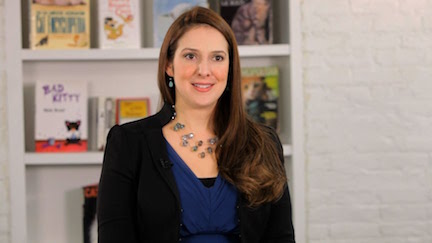 Cold weather usually means the kids and pets spend more time indoors and they can go bonkers. Less exercise and activity could result in unwanted behavior issues. Dr. E'Lise Christensen is a board certified veterinary behaviorist. She'll share some great ideas for keeping your pets occupied and out of trouble. As far as the kids go, you're on your own. This is part of the Fear Free Expert Series.
Cold weather usually means the kids and pets spend more time indoors and they can go bonkers. Less exercise and activity could result in unwanted behavior issues. Dr. E'Lise Christensen is a board certified veterinary behaviorist. She'll share some great ideas for keeping your pets occupied and out of trouble. As far as the kids go, you're on your own. This is part of the Fear Free Expert Series.
Dr. Christensen explains that enrichment is really important because when we look at our domestic animals that live in our homes, the reality is that even though they may have been domesticated for thousands of years, they still have very basic needs that many of us don't actually meet on a daily basis. We kind of assume that because our life is busy and we are doing many things that we choose to do, that our animals are also being mentally challenged and getting to choose to participate in specific activities. But the reality is that animals that feel like there isn't that much to do, may either start doing a lot of stuff that you don't want them to do because it's interesting for them, or they may actually shut down and do nothing.
So does this mean that Dr. Christensen sees more behavior problems in the winter time because people are less likely to get out with their animals? She explains that the difference here would be unruly behaviors versus true behavioral disorders. Unruly behaviors are normal behaviors that are species specific that people don't like. So for instance, jumping up on people to lick their faces is a very normal behavior of dogs. That is part of their suite of behaviors that comes with them genetically and one of the things that we alternately punish and alternately reinforce, sometimes within five seconds. So that is a behavior. Those types of behaviors are ones that are particularly vulnerable to getting worse when enrichment is low, because all these normal behaviors have nowhere to go. So the dogs and cats find new places to utilize these behaviors and usually they do things that people don't like. So when people are not actively getting their animals out to explore the world or providing enrichment and play opportunities that are variable, you can definitely see these unruly behaviors escalate.
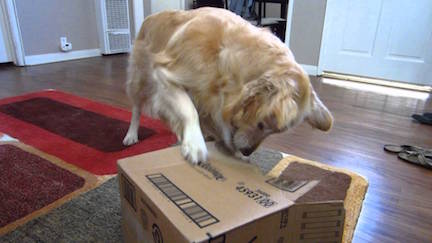 To enrich your pet's life, you can go out and buy toys and puzzles, which Dr. Christensen encourages you to do to play with your pet. But the great thing is that there are so many other ways you can enrich your animal's life. Even things as simple, although some people might find this gross, as picking up something off the street that's new and interesting and bringing it in and allowing your animal to sniff it. This works especially for dogs, because they're very olfactory in nature. That is their major sense, because the way they see the world is through their nose. So if you bring in some things that are new and interesting to them, you've just opened up a book for them, literally. You can also give them an opportunity to binge on a TV show. Another thing is to give them things like toilet paper rolls and paper towel rolls, as well as boxes, to play with. Of course if you have a pet that might swallow cardboard, you wouldn't do that. However, letting your dog rip open a box and solving a puzzle can be a really great way to enrich your pet - and it's free.
To enrich your pet's life, you can go out and buy toys and puzzles, which Dr. Christensen encourages you to do to play with your pet. But the great thing is that there are so many other ways you can enrich your animal's life. Even things as simple, although some people might find this gross, as picking up something off the street that's new and interesting and bringing it in and allowing your animal to sniff it. This works especially for dogs, because they're very olfactory in nature. That is their major sense, because the way they see the world is through their nose. So if you bring in some things that are new and interesting to them, you've just opened up a book for them, literally. You can also give them an opportunity to binge on a TV show. Another thing is to give them things like toilet paper rolls and paper towel rolls, as well as boxes, to play with. Of course if you have a pet that might swallow cardboard, you wouldn't do that. However, letting your dog rip open a box and solving a puzzle can be a really great way to enrich your pet - and it's free.
Dr. Christensen explains that even though it might be snowing, or it has snowed, there are still ways to provide enrichment outside. One way is to sprinkle some of their kibble around in the snow and let them look for it. You could even feed them their whole meal that way. This is really the true enrichment, because dogs would normally be searching for their food and spend a fair amount of time per day doing so. So anything you can do to help them spend more time looking for their food, is sort of like you walking an extra 15 minutes for the best bakery versus just going around the corner for a crappy one.
So what does the expert do for her own dog during the winter to enrich their life? Unfortunately Dr. Christensen's elderly dog recently passed away. But enrichment for her, because she was a small elderly dog with cognitive dysfunction, was very gentle. What you can do in the case of these older dogs or cats is to provide them enrichment at the level that they're able to do it. So for instance, if you are an older person and at age 73 you used to love doing the New York Times crossword puzzle, but now maybe you're 89 and it's just a little too much. So maybe we backtrack to something a little bit easier, where the reinforcement rate is higher, so you can answer those word puzzles very quickly. Same thing goes for our dogs and cats.
 When you have older animals, you may give them something like a snuffle mat, which is a very soft kind of rug that's specifically made for animals for foraging behavior. You just sprinkle the kibble, or whatever treats you might be using, in there. You then ruffle it up so that they fall down in between the pile of fabric pieces. To get the food, your animal has to nose around, just like they would if they were a dog visiting a garbage dump. This is where dogs mostly hang out if they're lucky enough to be close to some high intensity resource like that and they would be shuffling around in there all day. We can now emulate that essentially by providing a snuffle mat, because nobody wants a garbage dump in their house.
When you have older animals, you may give them something like a snuffle mat, which is a very soft kind of rug that's specifically made for animals for foraging behavior. You just sprinkle the kibble, or whatever treats you might be using, in there. You then ruffle it up so that they fall down in between the pile of fabric pieces. To get the food, your animal has to nose around, just like they would if they were a dog visiting a garbage dump. This is where dogs mostly hang out if they're lucky enough to be close to some high intensity resource like that and they would be shuffling around in there all day. We can now emulate that essentially by providing a snuffle mat, because nobody wants a garbage dump in their house.
There are all fabulous ideas and for those of you that are just sitting down and looking at your dog in the corner who wants to do something, go out and enrich their lives.
You can find more great tips for enriching your pet's life over at Fear Free Happy Homes and Fear Free Pets.
What To Do When Encountering Off-Leash Dogs
Stephanie, Colman, Guide Dogs of America
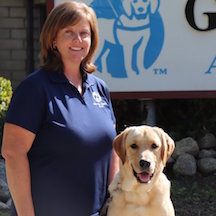 It's the stuff of nightmares. You and your dog are enjoying a walk through the neighborhood when, all of a sudden, you spot an unaccompanied canine heading your way. It could turn into a bad scene even if your dog is socialized. Stephanie Colman, the manager of the "Puppy Department" at Guide Dogs of America, has the five things you need to do if you encounter an off-leash or stray dog.
It's the stuff of nightmares. You and your dog are enjoying a walk through the neighborhood when, all of a sudden, you spot an unaccompanied canine heading your way. It could turn into a bad scene even if your dog is socialized. Stephanie Colman, the manager of the "Puppy Department" at Guide Dogs of America, has the five things you need to do if you encounter an off-leash or stray dog.
Stephanie has been a professional dog trainer for 15 plus years and deals with a lot of behavior issues and tells us a little bit about how to deal with a dog that is off leash that's approaching you or approaching you and your dog. This can be a scary situation, especially if the dog appears to be aggressive.
When Stephanie is out with her own dogs, particularly if she's someplace and has her dogs on leash, just seeing a lose dog coming toward them, whether it's with a person or just a loose dogs sort of roaming at large, it always gives her pause for concern. You just don't know necessarily if the dog is coming up to be friendly or coming up to start problems. The other issue is that it's not always about the other dog. Sometimes you're with dogs who don't appreciate dogs they don't know coming up and invading their personal safety bubble. It can be a tough thing and if you have a dog that you know is uncomfortable with that, it's very difficult to not panic a little bit, which of course you know always makes it worse.
The first thing Stephanie tends to suggest for people is whenever you're out with your dog, whether your dog is friendly, whether your dog's working through some challenges, whatever the case may be, take advantage of that time and pay attention to your dog. And it's tough because we always have cell phones and you see so many people out with their dog, but they're really just paying more attention to their phones.
So being proactive and being aware of your surroundings is probably the best piece of advice Stephanie can give people, because then you can maybe spot potential trouble up ahead and you're less likely to feel like you're suddenly being ambushed.
However, sometimes you are ambushed when an animal suddenly appears from behind a car or out of the bushes. And at the end of the day, we're all only human and when something literally jumps out and catches us off guard like that, we are probably going to react unfavorably with some sort of a scream or some sort of startle.
 Stephanie likes to raise her own dogs to believe that when they're out together, it's her job to keep the pack safe. She doesn't necessarily want her dogs to feel like they have to carry that burden on their shoulders. So if she has some sort of maybe less than perfect reaction where she says, "Oh my gosh," or she screams, the first thing she'll do in this situation is to give her dogs a treat so they won't all panic. She doesn't want her dogs to necessarily go, "Well it must be really bad. Listen to her, she's freaking out." So she always try to reinforce her dogs just for remaining calm or not joining in, if she's having a more reactive moment because something caught her off guard.
Stephanie likes to raise her own dogs to believe that when they're out together, it's her job to keep the pack safe. She doesn't necessarily want her dogs to feel like they have to carry that burden on their shoulders. So if she has some sort of maybe less than perfect reaction where she says, "Oh my gosh," or she screams, the first thing she'll do in this situation is to give her dogs a treat so they won't all panic. She doesn't want her dogs to necessarily go, "Well it must be really bad. Listen to her, she's freaking out." So she always try to reinforce her dogs just for remaining calm or not joining in, if she's having a more reactive moment because something caught her off guard.
So should you put yourself in between your dogs and an approaching dog? Of course avoiding confrontation is always your best bet. So if Stephanie sees a dog up ahead, she'll turn around and walk the walk the opposite way. If a dog keeps approaching and she's trapped and doesn't have a great escape exit at that moment, she will absolutely put herself between her dog and the unknown dog. She will also yell at the unknown dog, saying things like. "Get get back" and "Go on." If she has treats with her, she'll try tossing a hand handful of treats to the unknown dog, which will often get them to stop coming up in your space while they stop and sort of go, "Oh cookies." Then while they are distracted snorting up Scooby Snacks, that gives you your few seconds to turn and bail.
Stephanie also carries some sort of deterrent spray, like citronella in a can. It's not harmful to the dogs that are rapidly approaching and about to invade your space, but it's unpleasant enough that it will back most dogs off.
Another thing that she's used it for very effectively is to let the owners of the off leash dogs know that she really doesn't want their dog to come up in her face. You'll often see the dogs off leash and then behind them you have the owner holding the leash with no dog on it saying, "Oh it's okay, he's friendly." That's great that the dog is friendly, but sometimes you're with a dog who maybe isn't friendly and doesn't want that unknown dog coming up in his space. Stephanie has often been in the uncomfortable position of having to say, "Right, I know, but could you just call your dog." They then may say again, "No, no really he's friendly." And if she's asked a couple of times and not getting the response she need, she holds out her can. Then states again, "No really, please call your dog." That usually lets people know that she's serious and that they really need to call their dog.
This might not make her friends on her walks, but it is her responsibility is to keep her dogs safe and to not them in a situation where maybe she need's to react unfavorably, because somebody else has let their dog get into her dogs' personal space. She will sometime even explain to these people that she's sorry, but her dogs don't like dogs that they don't know coming into their face. And also that it's just citronella and it's not going to harm their dog.
Stephanie explains that some of the more creative things some of her clients have done is if they have a tiny dog is to pick them up and put them in a nearby trashcan and close the lid. Another thing is to put the smaller dogs in the back of a pickup truck if one is nearby.
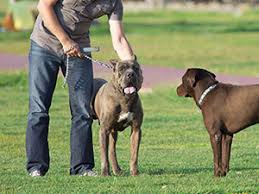 If you've had some sort of ambush, Stephanie explains, and it's been a little bit traumatizing for you or for your dog, it's important to try to make sure that the next time you're out and you see a dog you don't initially tense. All of that tension goes right down the leash, which can cause your dog to be concerned even before anything happens. This is super hard, because if you've had a scary encounter on a walk and you see a dog, you're anticipating that it could go bad again. So always trying to remain calm. It's super important to not choke up on your leash, because we have a tendency of tightening up on that leash and drawing our dog into it as close and as tight as possible. But that tight leash really is almost saying to your dog that there is danger. So trying to maintain that loose leash is super important.
If you've had some sort of ambush, Stephanie explains, and it's been a little bit traumatizing for you or for your dog, it's important to try to make sure that the next time you're out and you see a dog you don't initially tense. All of that tension goes right down the leash, which can cause your dog to be concerned even before anything happens. This is super hard, because if you've had a scary encounter on a walk and you see a dog, you're anticipating that it could go bad again. So always trying to remain calm. It's super important to not choke up on your leash, because we have a tendency of tightening up on that leash and drawing our dog into it as close and as tight as possible. But that tight leash really is almost saying to your dog that there is danger. So trying to maintain that loose leash is super important.
Stephanie also works really hard to try to teach her dogs that in the presence of another dog, she will be more fun and will give her dogs treats. If you're able to do this consistently, and it does take some practice depending on how interested in other dogs your dog happens to be. So it can take a while. But when it's done effectively, then the presence of another dog almost becomes a cue for your dog to look to you and almost say, "I hear a dog, where's my cookie?" If she has a dog that tends to be a little bit reactive towards other dogs, she would rather put in the effort to teach that alternative behavior then to have to strong-arm her dog because he's being so reactive every time he sees other dogs.
Whatever approach you choose, do your best to remain calm so as not to escalate the situation with your own panicked behavior. After any altercation with a loose dog, carefully assess your dog for injuries and consider taking him to the veterinarian, as bite wounds can be difficult to spot under thick fur. Write down as much as you can remember about the incident, such as location and a description of the dog, and contact your local animal control agency.
Visit Website
Who Doesn't Like Dogs? - Dr. Debbie
 I love dogs, and always have. But what happens when you discover a close friend doesn't merely not like dogs, but actually hates them?
I love dogs, and always have. But what happens when you discover a close friend doesn't merely not like dogs, but actually hates them?
I've been operating under the assumption that those who don't like dogs must have some evil lurking in their spirit and were destined to a life of incarceration. Just look at the statistics of criminals that abuse animals early on and who later progress to physical abuse of people, murder, or other sociopathic behaviors.
I'll admit not liking dogs is a far cry from turning one's hand to injure an animal or person, but some uncomfortable association is still there. As a full-fledged dog lover, or enthusiast of any animal for that matter, I cannot understand the psyche of an individual that is satisfied going about their life without animal companionship.
Any pet lover can spout off a list of benefits their furry one brings to their life...the steady comfort of companionship, a non-judging ear to hear out the day's tribulations, a workout or hiking buddy and a source of unconditional love at the end of a long day.
So, imagine my shock when I realized that a couple I know doesn't like dogs. Not just that they don't have dogs or misunderstand them - they actually dislike dogs.
Hint of this fact should have been apparent a long ago when they were over for dinner and they politely stood stiff as Calvary front line, when greeted by my yapping terrier mix. Or that they failed to stroke my Labrador's chin after receiving the gentle nudge of the typical canine greeting upon entering the home. The polite perfunctory smiles went un-noticed by me. "Sure, they don't have dogs," I reasoned as to why they weren't charmed by my little dog's amusing tail wagging display or by the steadfast devotion of my Labrador's greeting.
All of these sign posts I missed. I clearly misjudged all along. The couple, who I just assumed were just not yet fortunate to understand the benefits of pet companionship, were actually formidable dog dislikers.
 Realization struck me during a recent conversation with this couple. I was laughingly describing the vast differences in dog breed behavior comparing my former Labradors, to that of my current Bouvier. My comments must have been mistaken as some underhanded means to convince them the right breed was out there for them. At that moment, my guest raised hands and said, "I know what I like and don't like, and I don't want dogs." Clearly they didn't like dogs - and they misunderstood my comment as some means to turn them over to the canine side against their will. Astounded, I marveled how this response was not unlike a person who is recommended a mushroom containing side dish or gourmet meal from a fine restaurant, and who declares "I can't stand mushrooms and don't want anything to do with mushrooms!"
Realization struck me during a recent conversation with this couple. I was laughingly describing the vast differences in dog breed behavior comparing my former Labradors, to that of my current Bouvier. My comments must have been mistaken as some underhanded means to convince them the right breed was out there for them. At that moment, my guest raised hands and said, "I know what I like and don't like, and I don't want dogs." Clearly they didn't like dogs - and they misunderstood my comment as some means to turn them over to the canine side against their will. Astounded, I marveled how this response was not unlike a person who is recommended a mushroom containing side dish or gourmet meal from a fine restaurant, and who declares "I can't stand mushrooms and don't want anything to do with mushrooms!"
So why didn't I catch on to these dog haters sooner? For those of us that have pets, of any type, we recognize the many joys our pets bring to our lives. There are folks that don't want to bring that companionship into their life. The cogs of their lives have clicked along just fine without a pet in their life. Somehow lots of well-educated, social and seemingly normal people can raise a family and be successful and still dislike dogs.
Maybe we should feel sorry for them. Or maybe they feel sorry for us, for all the money, heart and time we put into a pet companion who's lifespan doesn't come near to that of a humans. They probably laugh at our reckless expenditures on a being who lives just a fraction of human life. I chose not to spend time wondering how they have made it without animals in their life...rather that I have succeeded because I have been fortunate to have animals in my life.
I ask that these non-pet people save their pity for me and my pets, because I know that any one of my dogs could say they lived live fuller than most people - full with adventure, splendor at new experiences and embracing the moment. And so have I at their side. So should the question come up at the time of my next life, I'll take both a side of mushrooms...and pets on the side.
Featured veterinarian known as "Dr. Debbie" on national pet radio program, Animal Radio. Ebook author of "Yorkshire Terriers: How to Be Your Dog's Best Friend"; "Pugs: How to Be Your Dog's Best Friend"; "Mini Schnauzers: How to Be Your Dog's Best Friend"; and "Shih Tzu: How to Be Your Dog's Best Friend." Dr. Debbie's books.
Visit Website
Animal Radio News - Lori Brooks
 Pet Food Sector Grows
Pet Food Sector Grows
U.S. researchers at Packaged Facts say most of the growth in the pet food sector of the 67 billion dollar pet care industry is going to behemoths Amazon.com and Chewy.com. Four other trends they expect to influence the American pet food industry in the New Year are home-delivered pet food, whether customized like fresh foods or non-customized like bagged or canned food. Another trend is pet parents who are searching for foods with preventative benefits. This is very high quality pet food, which improve an animal's health and those that include nutraceutical ingredients such as probiotics, omega fatty acids, glucosamine, fruits and vegetables. There is also DIY (do-it-yourself) pet food. Pet parents often supplement pet's meals with additional homemade side dishes such as grilled meat, limited ingredient meals, home-cooked pumpkin or other favorite indulgences. Other pet owners may pursue a "semi-homemade" approach by enhancing the pet's meal with various additions such as mix-ins, toppers, sauces and even spray-on nutrients.
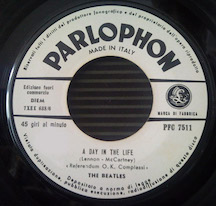 Beatles Song For Dogs
Beatles Song For Dogs
Sir Paul McCartney is confirming that one of the all time best Beatles songs, 'A Day in the Life,' has a special sound included in the track that only your dog can hear. It has long been a rumor that dogs knew something about the song that humans didn't. McCartney has finally let the truth be known saying that the Beatles did put a sound that only dogs could hear on the song. He says if you ever play the 'Sgt Pepper CD,' just watch your dog when the song 'A Day in the Life' comes on. Turns out the Beatles literally recorded a dog whistle in the song and thus was born a Beatles song for dogs. The whistle has a frequency of 15 kilohertz - one that goes undetected by the human ear.
Most Popular Cat Names In 2017
According to the website Find Cat Names, the top five male cats names in the US for the year are starting at number five with Bear, in fourth place is Oreo, third is Tiger, second is Milo and the most popular name for male cats in the US is Simba. For female cats, number five is Daisy, fourth is Abby, third is Luna, second is Bella and the most popular name for female cats in the US is Nala. The most popular cat names in UK, according to Argos Pet Insurance, are a little different. Starting at number five is Milo, in fourth place is Max, third is Alfie, second is Oscar and the most popular name for male cats in the UK is Charlie. For female cats, number five is Daisy, fourth is Tilly, third is Molly, second is Bella and the most popular name for female cats in the UK is Poppy.
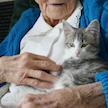 Do Pets Slow Down Your Aging Process?
Do Pets Slow Down Your Aging Process?
After all we've heard, there is a new report out in the British Medical Journal that says having a pet doesn't seem to slow down your ageing process after all. This research shows that pet owners appear to have the same physical and psychological health levels as non-pet owners. Experts at University College London (UCL) and Cambridge University conducted the study. The researchers analyzed figures from more than 8,700 adults with an average age of sixty-seven. A third of participants owned a pet, with 18-percent owning a dog, 12 -percent a cat and 3-percent another animal. After taking into account a range of relevant variables such as smoking and drinking, the researchers found no evidence of a strong association of any type of pet ownership with things like walking speed, lung function, grip strength, leg raises, balance, blood inflammatory markers, memory or depression. They say these results held true after separate studies were done of male and female pet owners. But they point out that it was an observational study, so no firm conclusions can be drawn about the cause and effect.
Most Popular Dog Names In 2017
If you got a new pet this year or are considering adding another pet to your family in the New Year, here's the latest list of the most popular dog names for 2017. Starting at number five is Jack, in fourth place is Buddy, third is Cooper, second is Charlie and the most popular name for male dogs in the US is Max. For female dogs, number five is Lola, fourth is Luna, third is Daisy, second is Lucy and the most popular name for female dogs in the US once again is Bella. But what are the up and coming names or maybe the ones just popular for the moment? The Netflix series "Stranger Things" has some influence too with the name Barb growing182-percent and the name Eleven, which is up 166-percent. "Star Wars" names like Rey and Leia are up 70-percent this year. While nostalgic names inspired by "Buffy the Vampire Slayer," the Spice Girls and "Harry Potter" made up 3-percent of all dog names this year, the name Nirvana was up 171-percent.
 Listen to the entire Podcast of this show (#943)
Listen to the entire Podcast of this show (#943)





